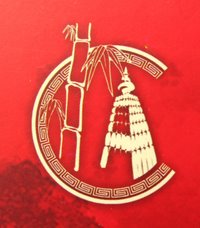Wednesday , May 15 , 2013
metro , page 18
metro , page 18
China Gallery at museum in Tagore Home
In 1924, Rabindranath Tagore spent 49 days in China, delivering addresses and forging associations. The visit, though occasioning protests from a section, built a bridge with Santiniketan and left Tagore’s imprint on the cultural mindscape of the land that lasts to this day. Now China’s gift to the city on the occasion of the bard’s 150th birth anniversary — a gallery on Tagore and China — is set to open at Jorasanko Thakurbari on Wednesday.
“This gallery is our tribute to Tagore, a friend of China,” says Zhang Lizhong, the Chinese consul-general in Calcutta. China has contributed about Rs 56 lakh for the gallery. “We also donated 500 books published in China comprising Tagore research and translations in Chinese.” Gifts have also been made of calligraphy tools, cutlery, lanterns and such representatives of Chinese culture.
Rabindranath Tagore
It all started with Lizhong’s predecessor Mao Siwei visiting Tagore House on the eve of the Chinese foreign minister’s visit in 2008. “He saw the Japan gallery and asked us why there couldn’t be a China gallery too. When we cited financial constraints he asked us to submit a proposal. That set the ball rolling,” recalls Indrani Ghosh, curator, Rabindra Bharati Museum.
Once the agreement was inked, the work was taken forward by officials of the Shanghai Archive Bureau, who came to Calcutta after hosting an exhibition in Delhi in 2011 on Tagore and China. “They sent 26 exhibits documenting every important event during Tagore’s stay,” says Zhong. These find pride of place in one of the eight rooms in Ram Bhavan, on the first floor of Tagore House. “There will be a touchscreen computer with information on Tagore’s visit, including transcripts of his speeches there,” Ghosh adds.
The scope of the gallery extends beyond Tagore, dating back to visits of Chinese pilgrims Fa Hien and Huen Tsang to ancient India.
The second room is dedicated to the Tagore family’s links with China. “Some of Dwarkanath’s ships were used by the East India Company for the infamous opium trade. Later, he himself engaged in it. But grandson Rabindranath was a bitter critic, calling it Chiney moroner byabsha in an article in the journal Bharati,” points out Ghosh. Debendranath, Tagore’s father, had visited Shanghai.
The other rooms are on China studies, China in Tagore’s writings, Tagore studies in China and Xu Beihong’s studio. The artist had visited Santiniketan and even held an exhibition in Calcutta. A copy of his portrait of Tagore will be on view. There will also be a library cum conference room.
“The opening of China Hall will send positive signals to the Indian people ahead of our Premier’s visit to India later this month,” the consul-general summed up.
SUDESHNA BANERJEE



1 comment:
iobhnuimh4
golden goose outlet
golden goose outlet
golden goose outlet
golden goose outlet
golden goose outlet
golden goose outlet
golden goose outlet
supreme outlet
golden goose outlet
golden goose outlet
Post a Comment